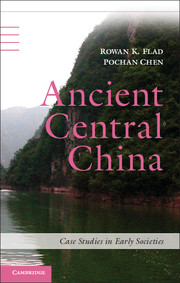Book contents
- Frontmatter
- Contents
- Figures
- Tables
- Boxes
- Acknowledgments
- 1 Introduction: Centers and Peripheries in the Ancient Yangzi River Valley
- Part I Setting the Stage
- Part II Political and Cultural Topographies
- 4 The Sichuan Basin: Shu and Its Predecessors
- 5 The Middle Yangzi: The Archaeology and History of Chu and Its Predecessors
- 6 Periphery at the Center: The Ba and Archaeological Cultures in the Three Gorges
- Part III Topographies of Economic Activity and Ritual
- Glossary
- Bibliography
- Index
5 - The Middle Yangzi: The Archaeology and History of Chu and Its Predecessors
Published online by Cambridge University Press: 05 February 2013
- Frontmatter
- Contents
- Figures
- Tables
- Boxes
- Acknowledgments
- 1 Introduction: Centers and Peripheries in the Ancient Yangzi River Valley
- Part I Setting the Stage
- Part II Political and Cultural Topographies
- 4 The Sichuan Basin: Shu and Its Predecessors
- 5 The Middle Yangzi: The Archaeology and History of Chu and Its Predecessors
- 6 Periphery at the Center: The Ba and Archaeological Cultures in the Three Gorges
- Part III Topographies of Economic Activity and Ritual
- Glossary
- Bibliography
- Index
Summary
Historical Accounts of Chu
The Middle Yangzi has been more continuously subjected to concerted archaeological research than the Sichuan Basin owing to its proximity to the Central Plains, a history of exciting archaeological finds, and association with significant polities and individuals known from historical sources. Rather than being a perpetually marginal area, the Middle Yangzi has fluctuated in the degree to which it is connected to the primary narrative of Chinese civilization. In the Late Western Zhou, this region became the core area of the Chu polity.
In contrast to Shu, Chu (pre-790–223 b.c.) was one of the urbanized states within the sphere of literate, bronze-producing peer polities around the Central Plains during the Zhou period. Early in its development, Chu became centered in the Middle Yangzi area immediately east of the Three Gorges. The political and cultural characteristics of the Chu polity that emerged in this region are known from both historical documents and archaeological finds. Nevertheless, scholarship on Chu is complex because the meanings of Chu are highly varied (Li X. 1991). Chu is used variously to refer to a region, a specific polity, people with a shared ethnic identity, and a culture that is associated with, but not necessarily coincident to, the Chu state. These definitions reflect different foci of analysis (Cook and Major 1999a, 1999b).
- Type
- Chapter
- Information
- Ancient Central ChinaCenters and Peripheries along the Yangzi River, pp. 108 - 139Publisher: Cambridge University PressPrint publication year: 2013

